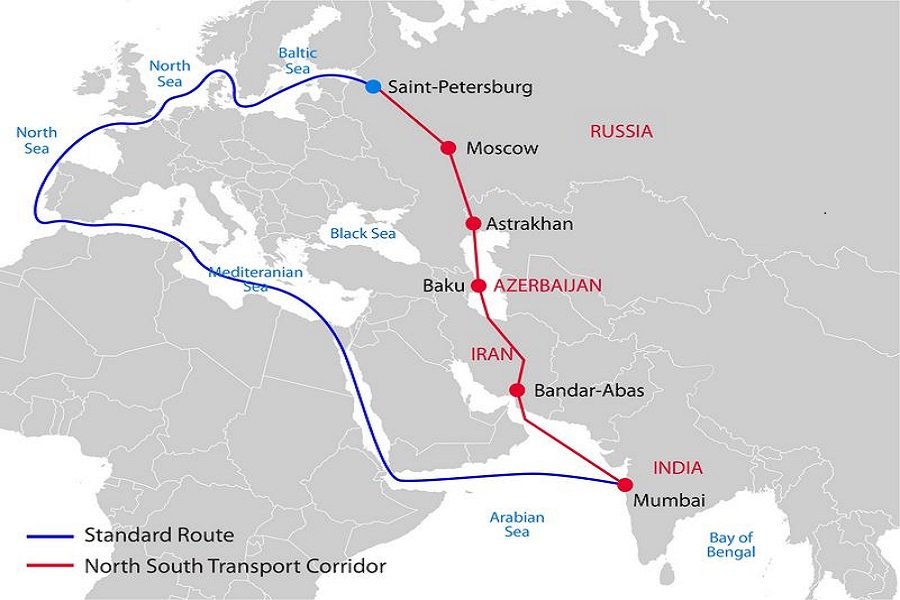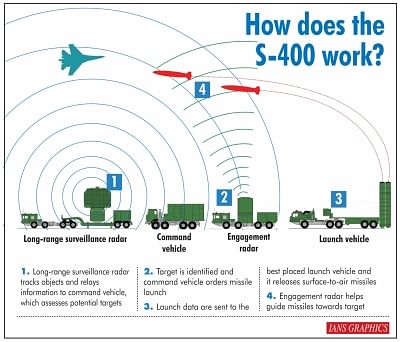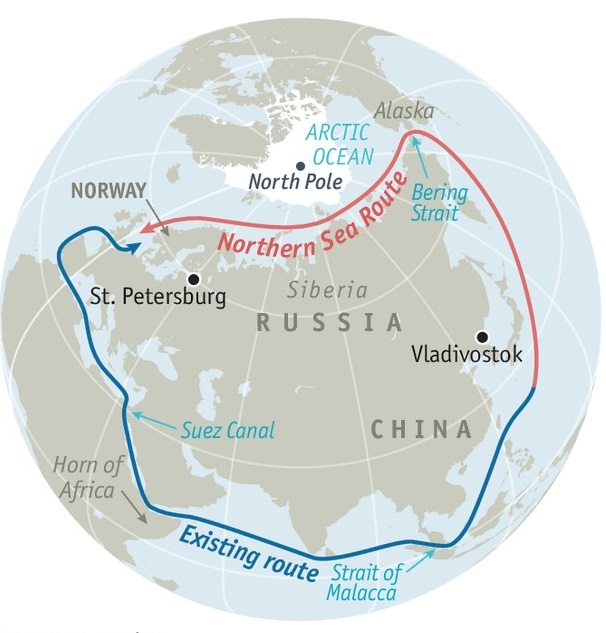India-Russia Relations
2021 DEC 8
Mains >
International relations > India and Global Powers > India-Russia
IN NEWS:
- During the 21st annual summit, India and Russia signed 28 agreements across a variety of sectors and inked a 10-year defense cooperation pact.
HISTORY OF INDIA RUSSIA RELATIONS:
- Relations with Russia are a key pillar of India’s foreign policy, and Russia has been a longstanding time-tested partner of India.
- In the years after its independence, support from Soviet Union has been key in India’s space, technological and nuclear advancement.
- During the Cold War era, India also found support from the USSR on strategic issues such as the Jammu and Kashmir problem.
- The Indo-Soviet Friendship Treaty of 1971 provided the framework to deepen the cooperation.
- Following the soviet disintegration and India’s LPG reforms in 1991, the relations underwent pragmatic changes and economic interests became the focal point.
- Both countries signed “Declaration on the India-Russia Strategic Partnership” in October 2000.
SIGNIFICANCE OF RUSSIA FOR INDIA:
- All-weather ally:
- Russia has consistently supported India over the years. For eg: Russia has consistently supported India on the Kashmir issue and the demands for UNSC reforms.
- Uphold Multilateralism:
- Both Russia and India support the concept of a multi-polar world. That is why they insist on cooperation through RIC (Russia-India-China), BRICS (Brazil, Russia, India, China and South Africa) and Shanghai Cooperation Organisation (SCO).
- Energy basket diversification:
- Besides trade in conventional fuels, India is actively pursuing a gas-based economy. Russia is a leading supplier of natural gas and also has large reserves of coal and petroleum.
- Eg: During the 2021 summit, an MoU for reliable long-term supplies of coal to India for steel production was signed. Earlier, India had agreed to import LNG worth an estimated USD 25 billion over 20 years from Russia.
- Counterweight to USA:
- Russia is a key element in India’s balancing act in foreign diplomacy. India needs strong cooperation with Russia to counter the occasional overbearing from USA.
- Indigenization of defence capabilities:
- India-Russia military technical cooperation has evolved from a buyer-seller framework to one involving joint research, development and production of advanced defence technologies and systems. The transfer of technology plays a crucial role in India’s indigenization efforts.
- Eg: The BrahMos cruise missiles, which are being locally manufactured in collaboration with Moscow, is a key part of India’s arsenal.
- Development of Indian manufacturing:
- Russian technology and investment are key for India to emerge as a global manufacturing hub.
- Eg: In the 2021 summit, Discussions were held on production of specialty steel under the Production Linked Incentive (PLI) Scheme in India, and utilisation of technologies from Russian state steel institutes for steel production in India by private and public sector companies.
- Act Far East Policy:
- The Russian Far East is a resource rich region and India has ambitious investment plans here. In this regard, India announced the Act Far East Policy from Vladivostok in 2019, in which India announced USD 1 bn Line of Credit (LoC) for various projects in the region.
- Resolve Afghan issue:
- Like Russia, India is concerned about the spread of extremism and radicalism beyond Afghan borders. Moscow, being a dominant player in the region, could be helpful for New Delhi in reaching out to the Taliban.
- India’s Central Asian ambitions:
- Russia has strong relations with the Commonwealth of Independent States and strategic powers like Iran. Strong relation with Russia is pivotal for India to tap into the energy and market potentials of Central Asia.
AREAS OF COOPERATION:
- Political:
- Both countries have established strong institutional dialogue mechanisms, like annual diplomatic summits, to discuss cooperation in bilateral and multilateral issues of mutual interest.
- Eg: Following the Taliban takeover in August 2021, India and Russia agreed to form a permanent bilateral channel for consultations on Afghanistan.
- Defence:
- Military-technical cooperation has been at the center of the bilateral relationship. Russia is the largest arms supplier to India and there are several joint ventures.
- Eg: BrahMos Missile System and Indo-Russian Rifles Pvt. Ltd. for production of AK Series Assault Rifles in India.
- Security cooperation:
- The two countries hold exchanges and training exercises between their armed forces periodically. Eg: Exercise INDRA; Regional Anti-Terrorist Structure (RATS) under SCO.
- Trade and investment:
- Trade between Russia and India amounted to USD 10.11 billion in 2019–20 and both countries have invested in each other's oil and gas sectors. They have set a bilateral trade target of USD 30 billion and bilateral investment of USD 50 billion by 2025.
- Civil nuclear energy:
- Russia is an important partner for India in civilian nuclear energy sector. In 2014, DAE and Russia’s Rosatom signed the Strategic Vision for strengthening cooperation in peaceful uses of atomic energy. Kudankulam Nuclear Power Plant (KKNPP) is built with Russian cooperation.
- Connectivity:
- Russia and India are keen on developing the International North-South Transport Corridor to promote connectivity along central Asia and Eastern Europe.

- Space:
- Both sides cooperate in the peaceful uses of outer space, including satellite launches, GLONASS navigation system, remote sensing and other societal applications of outer space. The agencies are cooperating in India’s Human Spaceflight Program – Gaganyaan.
- Multilateral cooperation:
- Russia has been a long-standing supporter of India’s membership of the UN Security council and the Nuclear Suppliers Group.
- India and Russia collaborate in several other multilateral forums, such as the BRICS and Shanghai Cooperation Organisation.
- Cultural cooperation:
- There is strong interest among Russian people in Indian dance, music, yoga and Ayurveda.
- Jawaharlal Nehru Cultural Centre, Moscow, established in 1989, has been mandated with the task of maintaining India’s cultural relations with Russian Federation.
- Indian-Russian Working Groups and Cultural Exchange Programme cater to the cultural and tourism needs of both the countries.
|
S-400 Missile Defence Systems
- The S-400 Triumph is a mobile, surface-to-air anti-aircraft missile system developed in the 1990s by Russia. It is described as one of the most advanced air defense systems available today.
- The system can engage all types of aerial targets, including aircraft, unmanned aerial vehicles (UAV), and ballistic and cruise missiles, within the range of 400km at an altitude of up to 30km. The system can simultaneously engage 36 targets.
- Besides Russia, Belarus and China have been using the s400. Turkey will soon join this group of nations.
- India completed negotiations in 2018 to buy the system through a Rs 40,000 crore deal. The first division will be delivered by the end of 2021.

|
AREAS OF CONCERN:
- Russia-US relations:
- The stagnation in US-Russia relations does not augur well for New Delhi's strategic interests. The growing distance between the US and Russia brings Russia closer to China and constrains India’s strategic choices.
- Conflicting ties:
- Russia’s growing alignment with China and Pakistan is proving to be a sticking point for India. There is also growing anxiety in Moscow over New Delhi’s deepening security ties with Washington, both bilaterally and through the Quadrilateral Security Dialogue.
- China factor:
- Russia is turning out to be a junior partner in Russia-China relationship. This does not bode well for India.
- Potential US sanctions over India:
- Washington has repeatedly warned India that it could face sanctions under the Countering America’s Adversaries Through Sanctions Act (CAATSA) for the purchase of S-400 missile system from Russia.
- Indo-Pacific strategy:
- India’s growing strategic partnership with the US, Japan and Australia conflicts with Russia’s interests. For India, the Indo-Pacific is a geographic space of economic and security importance, in which a cooperative order should prevent the dominance of any external power. However, Russia and China see the initiatives as part of a U.S.-led policy of containing them.
- Question over logistics exchange agreement:
- Logistical exchange agreements are designed to lay down the administrative framework through which partnering countries can enjoy access to use each other’s military facilities like ports and military installations. Eg: Logistics Exchange Memorandum of Agreement (LEMOA) between India and USA.
- During the 2021 summit, discussions on the Reciprocal Logistics Support Agreement (RELOS) were held but it was not signed.
- Russia’s domestic issues:
- Russia’s annexation of Crimea, alleged poisoning of opposition leader etc. have resulted in the country having poor relations with European and Atlantic powers. This is a hinderance for India in expanding its cooperation with Russia.
- Weak connectivity:
- Connectivity between both countries is limited. Despite years of talks, INSTC is yet to begin. There is also the linguistic barrier, preventing strong people to people relations.
- Question over Arctic resources:
- With global warming opening up Arctic Sea, countries are hoping to make the region part of the global commons. However, Russia is against this idea, thereby contradicting with India’s interests in the region.
SIGNIFICANCE OF 21ST SUMMIT:
The year 2020 witnessed challenges creeping into the age-old relationship, as Russia became vocal about expressing its displeasure on India’s engagements with the Quad. However, the 2021 summit was very important to correct this narrative. This is evident from the key outcomes of the summit:
- The first India-Russia 2+2 ministerial dialogue was held alongside the summit. With this, India now has a 2+2 format dialogue mechanism with four of its key strategic partners: the others being Australia, the US and Japan.
- 28 agreements across sectors from defence to energy to space exploration, science and technology, heavy engineering, to trade and investment were signed.
- In a 99-point joint statement issued after the summit, India and Russia agreed to intensify consultations on complementarities between integration and development initiatives in greater Eurasian space and in the regions of Indian and Pacific Oceans.
- The ‘Agreement on Program of the Military-Technical Cooperation from 2021-2031’ was signed. This Defence Cooperation Program outlines the ongoing defence cooperation and future possible cooperation between the two countries.
- Despite the threat of American sanctions, India has decided to go ahead with the purchase of S400 missile defence system.
- India has decided to source more crude oil from Russia. Russia is also expected to expand their investments in India, from petroleum to petrochemicals.
- Both countries have stated to explore the ‘Northern Sea Route’ to increase both crude and LNG supplies from Russia. The two sides also signed a protocol to allot land to set up Indian Consulate General in the city of Vladivostok.

- The role of connectivity through the International North-South Transport Corridor (INSTC) and the proposed Chennai-Vladivostok Eastern Maritime Corridor figured in the discussions. Pertinently, Chabahar Port in Iran was mentioned in the joint statement.
- Key issues such as the evolving situation in Afghanistan, Chinese incursions in Ladakh and the situation in Ukraine came up during the conversations.
- The joint statement mentioned India’s concerns of terror networks like Pak-based terror groups like the Lashkar-e-Taiba (LeT) finding space in Afghanistan.
WAY FORWARD:
- Strengthen ties with Russia:
- Russia is India’s all-weather friend and critical to India’s non-aligned foreign policy. Hence, India should take measures to strengthen this with Russia.
- Promote economic relations:
- Encouraging economic links with the Russian Far East and activation of Chennai-Vladivostok maritime corridor could help persuade Russia into retracing its relationship with India.
- Promote connectivity:
- India should seek to strengthen its presence in Central Asia through connectivity with Russia and other Central Asian countries. For this, projects such as the International North South Transit Corridor project and TAPI project needs to be completed at the earliest.
- Capitalise on post-pandemic recovery:
- COVID-19 could trigger a change, which should be capitalised by India in matters of global governance. India could utilise its relations with Russia and its centrality in SCO and BRICS to push forward global reforms and redevelopment strategies.
- Leverage on anti-China sentiments:
- Russia is aware of the growing asymmetry of its ties with China. India needs to capitalize on this and promote stronger economic, strategic and technological ties with Russia.
- Encourage private sector cooperation:
- India should encourage businesses and other interested parties to participate more with Russian entities.
PRACTICE QUESTION:
Q. The outcomes of India-Russia summit 2021 highlights a clear revival in the bilateral relations between the two countries. Critically analyse?

